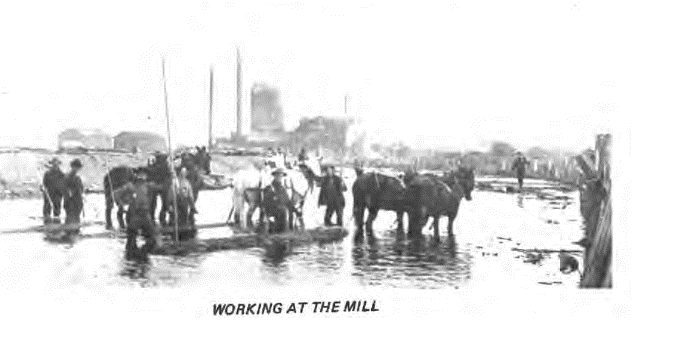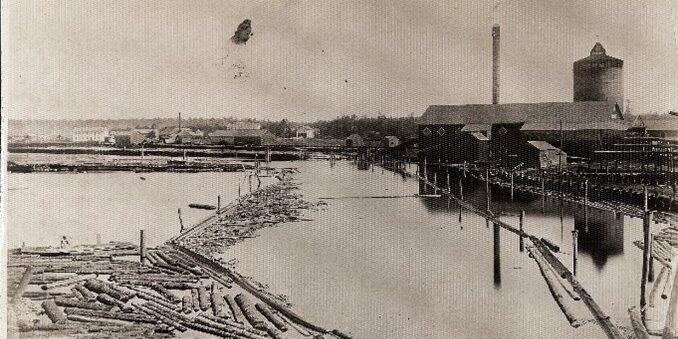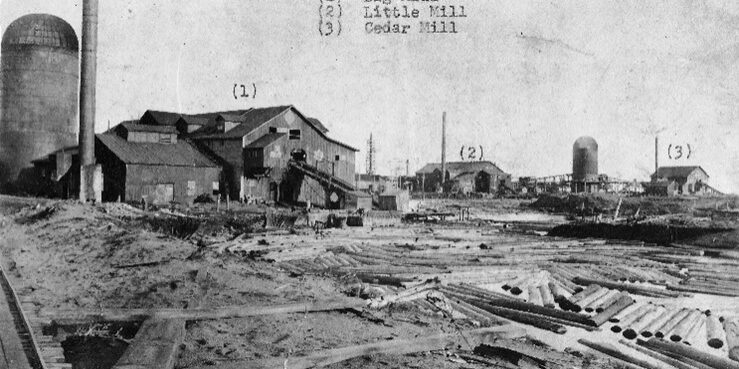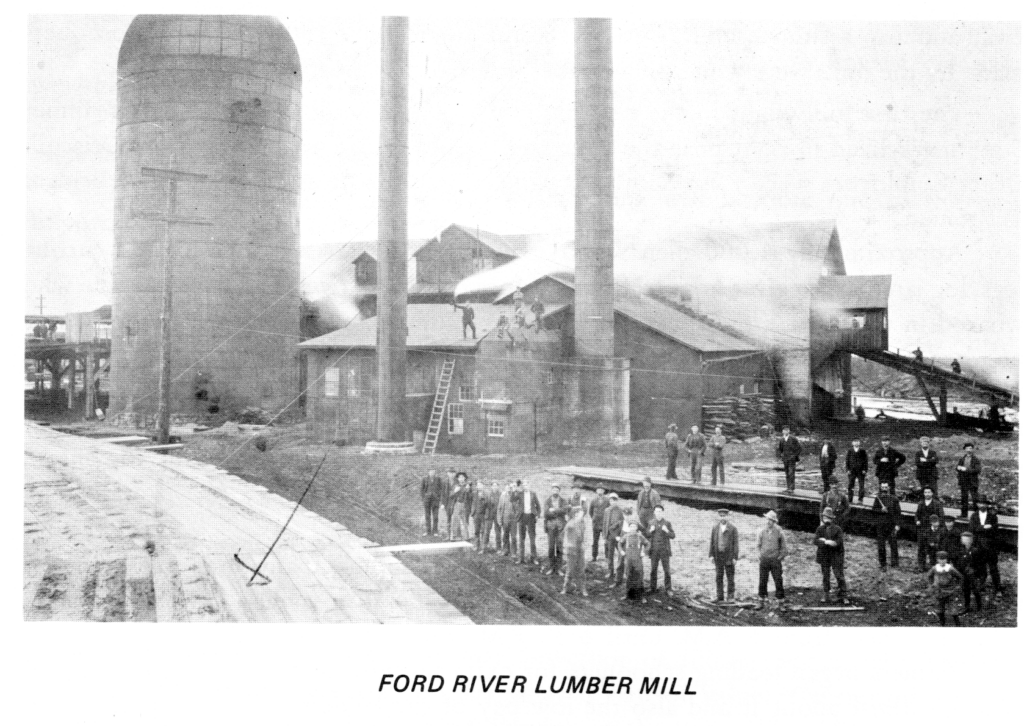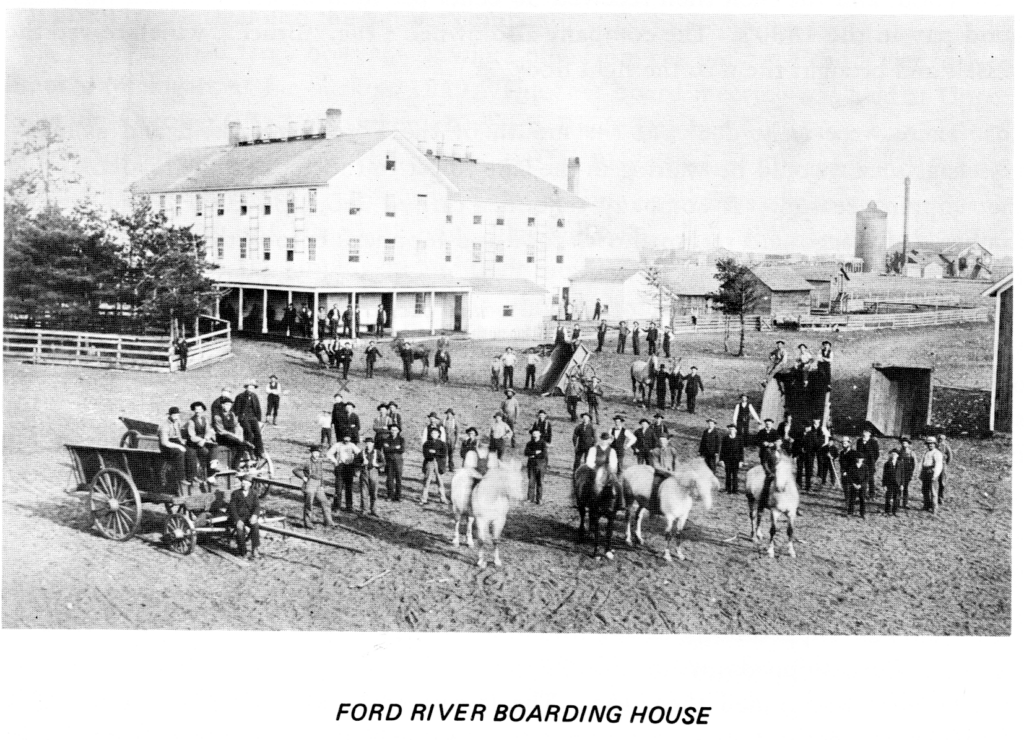Ford River History
The Ford River, the namesake of Ford River Township, was named for Thomas Ford, a governor of Illinois who in 1842-46 explored a portion of the Michigan Upper Peninsula (“UP”) wilderness. Following the 1780 establishment of an early Native American Village at Misery Bay, the Ford River Lumber Company moved into the Township in 1866. The community of Ford River was once a typical sawmill town and thriving lumber community of approximately 800 inhabitants. For the most part, everyone in the community worked in the lumber camps or the mills during these early years. Several large buildings formed the heart of the community, supporting the needs of the early inhabitants of Ford River. These included the store and office building, the boarding house, sleeping house, community privy, town hall, company barns, schoolhouse, and a nondenominational church. These original buildings are no longer standing in Ford River Township, but provided the framework for the community as it stands today.
For a large portion of the Township’s history, the Ford River Lumber Company owned about 10,000 acres of dense forest lands along the river. Here, trees were cut into logs during the winter and hauled to the riverbanks where, in spring, they were floated down the river to the mills. Logs were then cut into lumber, ties, lathes, and shingles, after which they were piled onto lumber schooners to be taken to Chicago and Milwaukee.
Ford River Township boasted three sawmills operated by the Ford River Lumber Company: the Large Pine Mill, the Little Mill, and the Shingle Mill. When it became apparent that the company was no longer profitable, operations were suspended.
